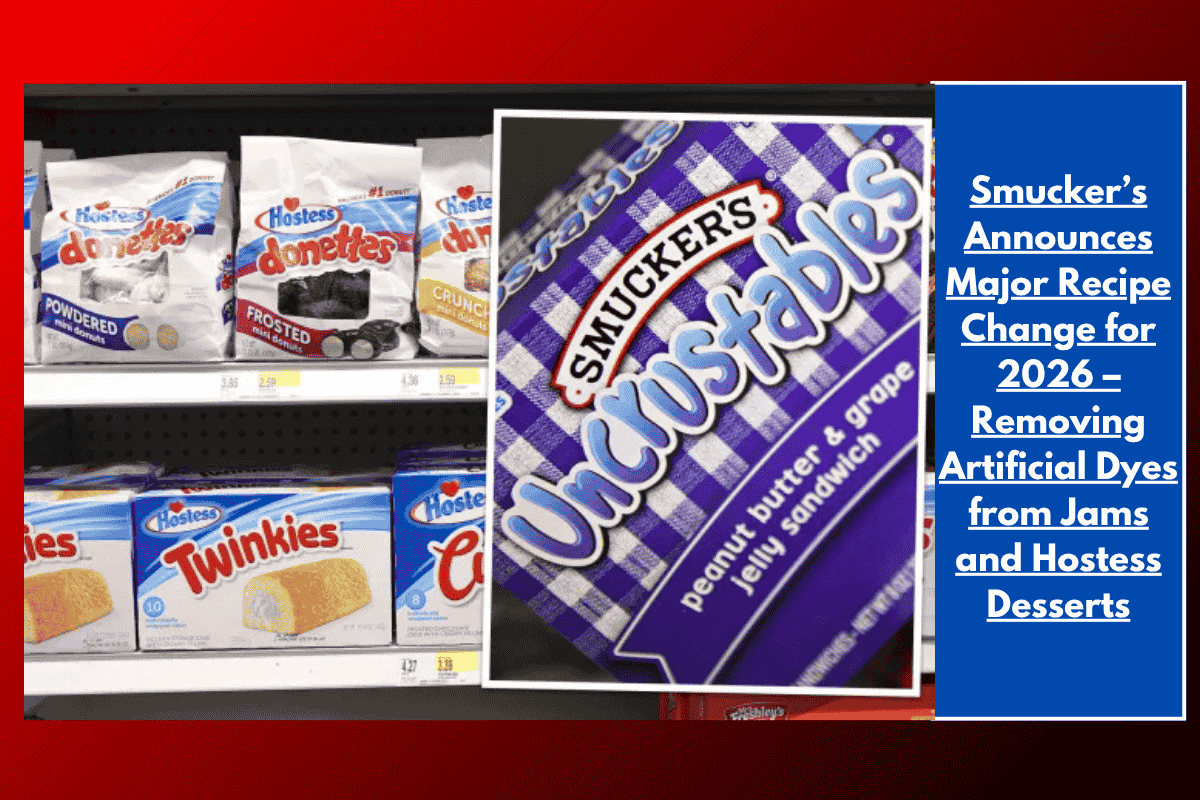The J.M. Smucker Company, known for its fruit spreads and beloved brands like Uncrustables and Hostess products, is making a significant change to its recipe lineup. As part of a broader trend within the food industry, Smucker’s has committed to eliminating FD&C artificial dyes from its food products by 2026. This includes popular items such as its sugar-free jams, ice cream toppings, and Hostess desserts like Twinkies and Snoballs, which currently contain artificial food colorings like Red 40 and Yellow 5.
Why Is Smucker’s Making This Change?
Smucker’s decision to phase out synthetic dyes comes as part of a larger movement within the food industry towards more natural ingredients. The company aims to meet growing consumer demand for healthier, more transparent food options. CEO Mark Smucker explained, “Our commitment to remove FD&C colors from our sugar-free fruit spreads, ice cream toppings, and sweet baked goods products represents the latest example of our desire to evolve and our ability to continue to innovate to deliver on the expectations of our consumers.”
This change will particularly impact the sugar-free jams and Hostess brand products, such as Twinkies, which currently use Red 40 and Yellow 5 to achieve their signature bright colors. In addition to reformulating these products for the general public, Smucker’s will also ensure that artificial dyes are eliminated from products sold in K-12 schools by the 2026-2027 school year.
Smucker’s Leading the Charge
Smucker’s isn’t alone in making this shift. Other major food companies have also pledged to remove artificial dyes from their products in the coming years. Companies like Nestlé, Conagra Brands (the parent company of Duncan Hines), Kraft Heinz, and General Mills are all making similar commitments to eliminate FD&C colors by the end of 2027.
In addition, spice manufacturer McCormick has begun working with food manufacturers and restaurants to reformulate products and remove artificial colorants. Beverage giant PepsiCo is also reducing artificial ingredients in its products, continuing the industry-wide trend.
Federal Push Against Artificial Dyes
This movement to remove synthetic dyes aligns with the federal government’s goal of reducing the use of petroleum-based chemicals in food products. The U.S. Food and Drug Administration (FDA) has taken steps to review food chemicals more thoroughly. Recently, regulators banned Red 3 dye from food, following its previous prohibition in cosmetics due to potential cancer risks. Health and Human Services Secretary Robert F. Kennedy Jr. has been vocal about the dangers of petroleum-based food additives, claiming they pose “real, measurable dangers” to children’s health and development.
The Impact on Consumers and Food Manufacturers
This change is expected to influence the food manufacturing landscape significantly. While companies like Smucker’s and others are making these voluntary adjustments, they are not alone in facing the challenges of reformulation. Sam’s Club, for example, is overhauling its entire line of home-brand products by the end of the year to remove artificial dyes, in alignment with broader food industry goals.
For consumers, these changes mean that some beloved treats, like Twinkies and Snoballs, will look and possibly taste different once the dyes are removed. However, the goal is to create products that are not only safer but also more aligned with the growing preference for natural, less-processed foods.
Smucker’s decision to eliminate artificial dyes from its products by 2026 represents a significant shift in the food industry, as more companies move toward cleaner, natural ingredients. While this will impact the appearance and possibly the flavor of some beloved products, the overarching goal is to improve public health and meet consumer demand for healthier options. As more companies follow suit, we may see a future where artificial dyes are a thing of the past in mainstream food products.














